Whether businesses and municipalities are looking for an expansive facility with lower long-term costs, or just want to improve the quality and efficiency of their operation, hybrid buildings present a feasible alternative that can be cheaper and safer to work in than other traditional structures.
By Geoffrey Ching and Pat Mahoney
For municipal operations and private businesses in the waste and recycling industry, the quality of a facility means everything. No matter the application, these groups need reliable structures that can comfortably house their equipment and bulk materials, as well as support a safe and sustainable worksite.
With the demands of the industry evolving, many operations find themselves looking to innovate and take advantage of unique structural solutions that can help them adapt and increase efficiency. Amidst the search for a more viable structure, hybrid buildings have emerged as a notable alternative, largely due to their versatile, cost-effective designs.
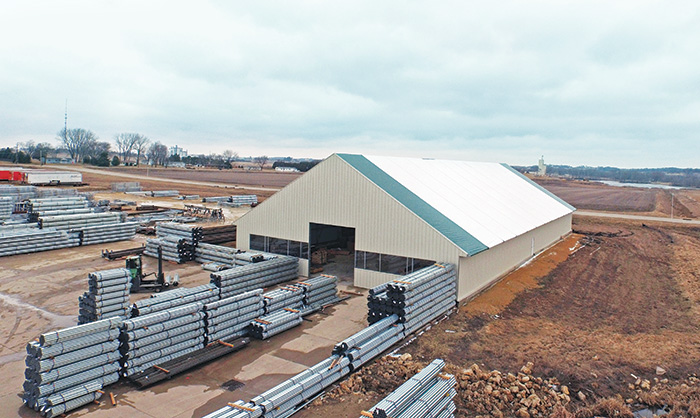
Built around corrosion-resistant steel framing, hybrid structures combine the durability of metal sidewalls with the versatility of a fabric roof. This results in a dependable, low maintenance building that waste and recycling operations can thrive in for decades, while simultaneously reducing operating costs and limiting their environmental impact.
Complete Customization
Waste management and recycling facilities will likely have different requirements based on a variety of factors, like the location of their site or the size and type of materials being stored. This makes customization an invaluable feature for operations to have incorporated into the design of their structure.
In many cases, hybrid buildings can be completely custom, which allows businesses and municipalities to create a facility that is
tailored to their exact specifications. Operations can start by choosing their ideal frame, and since hybrid buildings generally employ an I-beam frame or truss frame, they can be constructed to just about any size, while still maintaining a low cost per square foot.
Hybrid structures have versatile, cost-effective designs that make them great for covering bulk materials. This allows each facility to be optimized for the precise size and shape of the material or
equipment being covered.
In addition to providing operations with an ideal size structure for their facility, hybrid buildings can also be custom engineered for their individual region. Regardless of where an operation is located or what purpose their structure needs to serve, engineering will allow their hybrid building to meet any local building codes. This ensures the workers, machinery, and materials inside receive reliable coverage during even the most severe weather.
After operations get their hybrid building sized out and engineered for municipal codes, they can then focus on modifying other aspects of their structure. Hybrid buildings can be outfitted with all the accessories that facilities need to function properly, and they can also be designed with unique features that are often difficult to incorporate into conventional structures. For example, waste and recycling operations can have their building manufactured with open end walls, which creates easy access for vehicles and machinery and increases ventilation to improve the working environment.
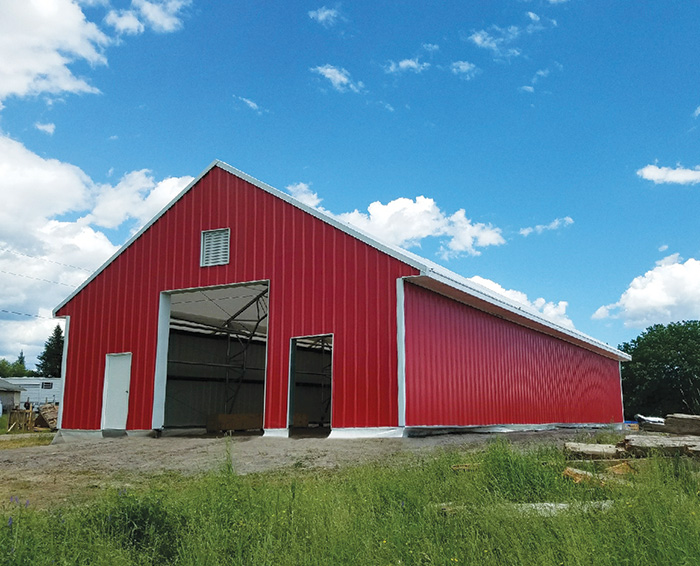
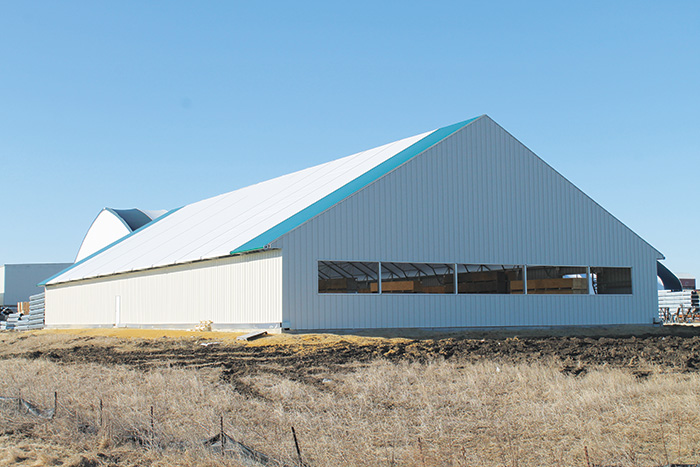
Reduced Construction and Operating Costs
The overall cost of a structure will likely play a major role in an operation’s decision-making process. Traditional buildings can be expensive to construct and operate long-term, but hybrid structures are inherently designed to maximize quality and minimize cost, so they are an attractive option for any waste and recycling facility.
Recycling and waste management facility managers want structures that most efficiently and cost-effectively cover their materials and equipment. Hybrid structures offer savings compared to traditional buildings due to the cost-savings of materials and
installation of fabric covers and metal cladding, which are far less labor-intensive than components used on traditional buildings.
While the lower price tag of fabric and metal cladding is certainly a desirable feature, hybrid buildings also have the luxury of being able to use a wide range of foundations. With the right foundation, operations can set up a facility that is not only cost-effective but supplies them with added versatility as well.
Foundation considerations are crucial, and hybrid structures can employ several different foundation options beyond traditional concrete piers. This includes anything from concrete blocks to shipping containers or helical anchors. Helical anchors present a more unique foundation option for waste and recycling facilities. They are less invasive than many traditional foundations and require minimal sitework, reducing the total cost of onsite installation. By taking advantage of a helical anchoring system, hybrid buildings can offer the same strength as other modern structures, while also allowing operations to relocate their building if needed.
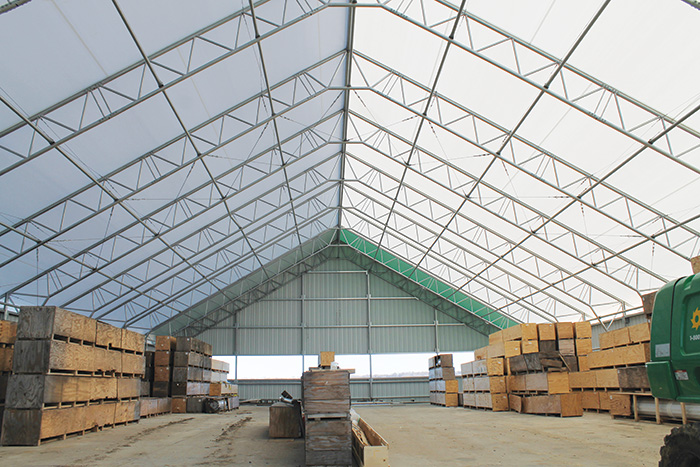
Along with cost-effective foundations and building materials, hybrid structures are particularly useful for cutting monthly operating costs. Fabric cladding can be naturally translucent, meaning it allows sunlight to filter through and flood a building’s interior. Since hybrid buildings use fabric covers in place of standard roofing, they can supply a facility with natural lighting all throughout the day, producing a well-lit workspace and limiting the need for artificial light fixtures.
Fabric covers are also climate-sensitive and help promote natural ventilation. This can keep a facility cooler in the summer and warmer in the winter, mitigating the need for extensive HVAC systems and further reducing an operation’s energy dependency.
Increased Sustainability
As time passes, limiting environmental impact continues to be a developing trend in the waste and recycling industry, so it is important for businesses and municipalities to take that into account when deciding on their structural solution. The eco-friendly design of hybrid buildings makes them a natural choice for operations looking to integrate a more sustainable structure into their worksite.
The most significant way hybrid buildings can assist the local environment is by helping facilities cover materials that may cause environmental damage in terms of air pollution or water runoff. Further environmental impacts can be avoided with
installation and equipment, such as rain gutters and ridge vents. Hybrid buildings use their combination of fabric and metal cladding to provide effective coverage and moisture control for bulk materials and additional accessories, and streamlined installation can help operations remain compliant with environmental regulations.
Certain manufacturers also prioritize the use of greener building materials, like producing high-quality fabric cladding that is one hundred percent recyclable. After lasting decades on a hybrid building, these covers can be disposed of and replaced easily, with very little impact on the environment.
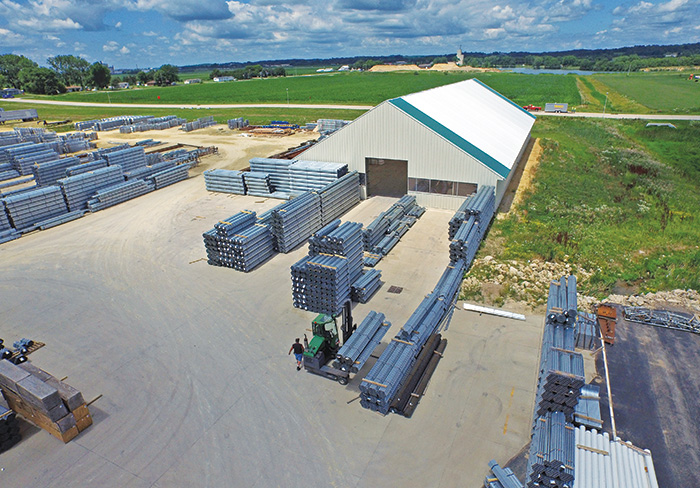
A Feasible Alternative
Whether businesses and municipalities are looking for an expansive facility with lower long-term costs, or just want to improve the quality and efficiency of their operation, hybrid buildings present a feasible alternative that can be cheaper and safer to work in than other traditional structures. | WA
Geoffrey Ching is Director of Sales for ClearSpan Structures.
Pat Mahoney is the Digital Content and SEO Specialist for ClearSpan Structures.
For more information, e-mail [email protected] or www.clearspan.com.
